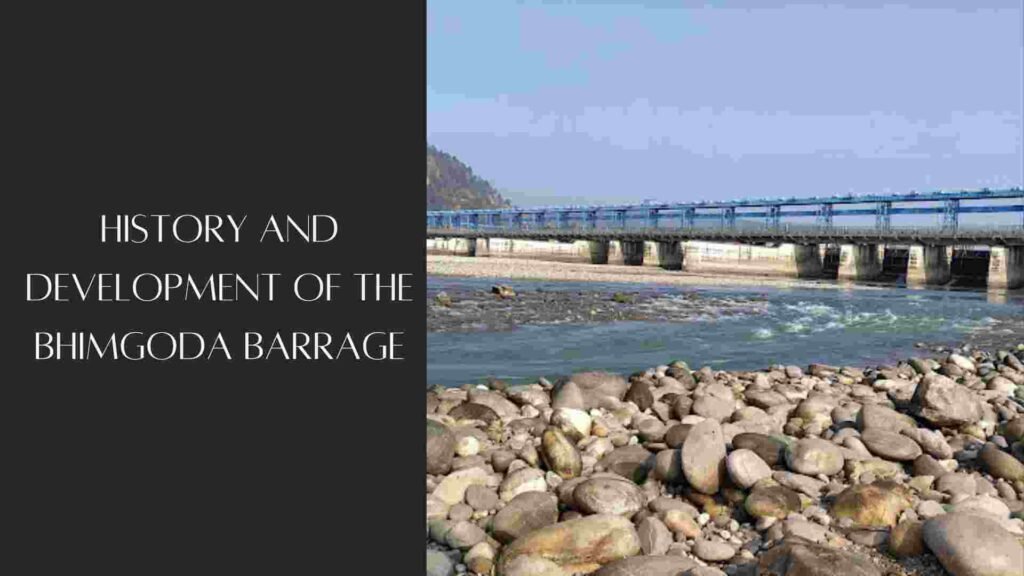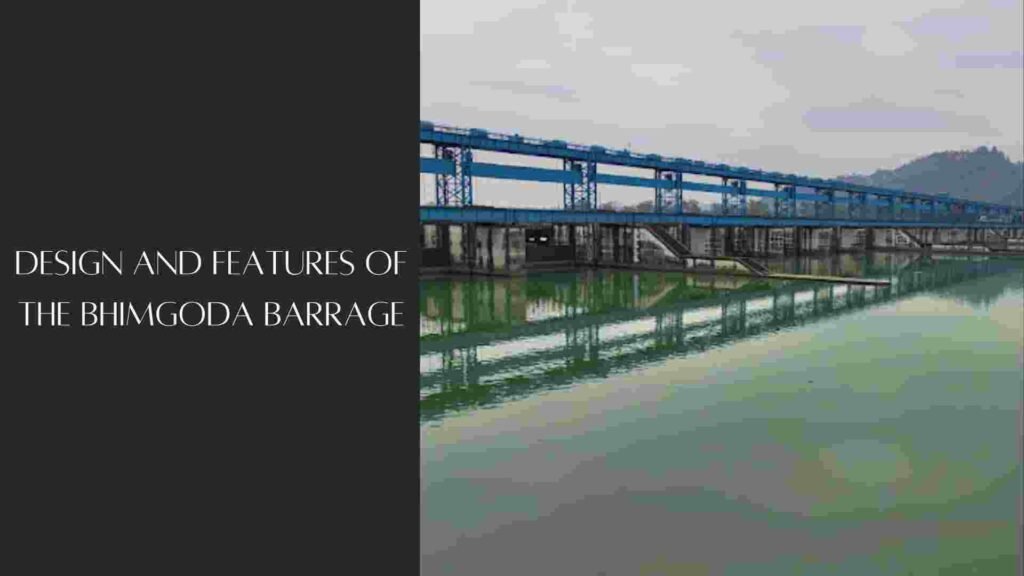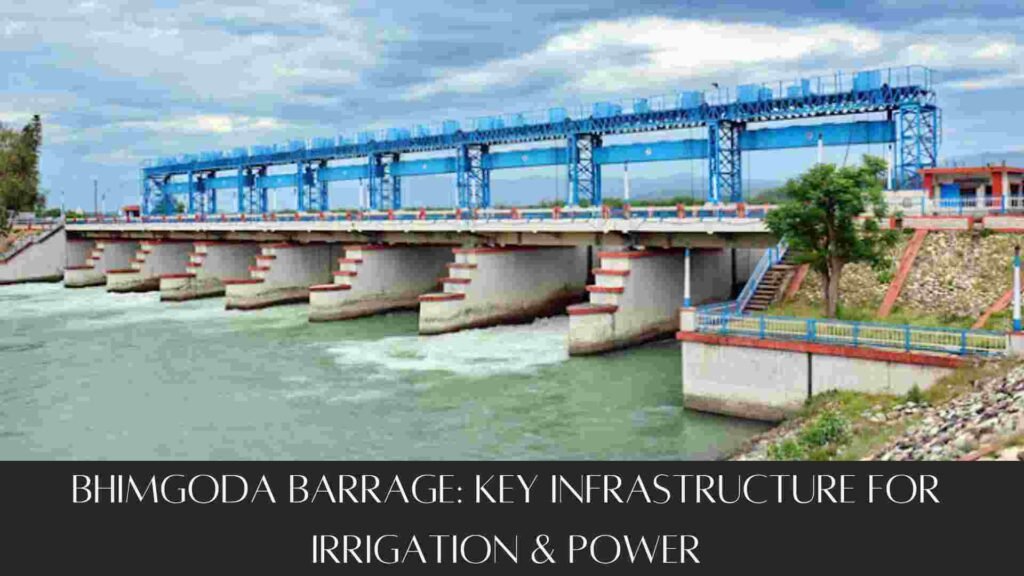The Bhimgoda Barrage, located near Har Ki Pauri in Haridwar, Uttarakhand, is a crucial structure serving multiple purposes such as irrigation, flood control, and hydroelectric power generation.
Situated on the sacred Ganges River, it supports the Upper Ganges Canal and is integral to the region’s agricultural and energy needs.
This article explores the history, design, and significance of the Bhimgoda Barrage, showcasing its impact on the local ecosystem and economy.
History and Development of the Bhimgoda Barrage

The first version of the Bhimgoda-Barrage was constructed between 1840 and 1854, during a significant phase of infrastructure development in India.
Lord Dalhousie, the then Governor-General of India, inaugurated the project, marking a turning point for irrigation systems in the region.
The initial structure was designed to divert water from the Ganges River into the Upper Ganges Canal, a vital waterway for agriculture.
However, as the needs of the canal system grew, the original barrage was replaced twice. The second structure, built between 1913 and 1920, was located 3 km upstream from the original site.
The final barrage, which currently stands in its place, was completed between 1979 and 1983, providing greater capacity for water diversion and flood management.
Design and Features of the Bhimgoda Barrage

Spanning 454 meters, the Bhimgoda Barrage is an engineering marvel designed to regulate water flow and prevent flooding.
Equipped with advanced spillway and under-sluice gates, the barrage efficiently manages water discharge, with an impressive capacity of 19,300 cubic meters per second.
The structure diverts water into the Upper Ganges Canal, which stretches over 6,450 kilometers and irrigates more than 2 million hectares of farmland.
This extensive network underscores the barrage’s role as a cornerstone of India’s irrigation system.
Hydroelectric Power Generation at the Bhimgoda Barrage
Beyond irrigation, the Bhimgoda-Barrage is pivotal in hydroelectric power generation. Two power plants, Pathri and Mohammadpur, utilize water diverted by the barrage to produce electricity.
Commissioned in 1955 and 1952, respectively, these plants collectively contribute over 29 MW of power to the region, with Pathri generating 20.4 MW and Mohammadpur adding 9.3 MW.
Bhimgoda Barrage: A Vital Water Management Marvel in Haridwar
The Bhimgoda Barrage, located near Har Ki Pauri in Haridwar, Uttarakhand, is a crucial structure serving multiple purposes such as irrigation, flood control, and hydroelectric power generation.
Situated on the sacred Ganges River, it supports the Upper Ganges Canal and is integral to the region’s agricultural and energy needs.
This article explores the history, design, and significance of the Bhimgoda-Barrage, showcasing its impact on the local ecosystem and economy.
History and Evolution of the Bhimgoda Barrage
The Bhimgoda Barrage has a rich history, beginning with its initial construction between 1840 and 1854. This marked a transformative era in India’s irrigation infrastructure, spearheaded under the guidance of Lord Dalhousie, the then Governor-General of India.
The original structure was built to channel water from the Ganges into the Upper Ganges Canal, a lifeline for agriculture in the region.
Over time, growing demands necessitated updates to the barrage. A second version was constructed between 1913 and 1920, positioned 3 kilometers upstream from the original site.
The current and final version of the Bhimgoda-Barrage was completed between 1979 and 1983, boasting enhanced capacity to manage water diversion and control floods effectively.
Design and Features of the Bhimgoda Barrage
Spanning 454 meters, the Bhimgoda Barrage is an engineering marvel designed to regulate water flow and prevent flooding. Equipped with advanced spillway and under-sluice gates, the barrage efficiently manages water discharge, with an impressive capacity of 19,300 cubic meters per second.
The structure diverts water into the Upper Ganges Canal, which stretches over 6,450 kilometers and irrigates more than 2 million hectares of farmland. This extensive network underscores the barrage’s role as a cornerstone of India’s irrigation system.
Hydroelectric Power Generation at the Bhimgoda Barrage
Beyond irrigation, the Bhimgoda-Barrage is pivotal in hydroelectric power generation. Two power plants, Pathri and Mohammadpur, utilize water diverted by the barrage to produce electricity.
Commissioned in 1955 and 1952, respectively, these plants collectively contribute over 29 MW of power to the region, with Pathri generating 20.4 MW and Mohammadpur adding 9.3 MW.
Ecological Importance: Neel Dhara Bird Sanctuary
Behind the Bhimgoda-Barrage lies the serene Neel Dhara Bird Sanctuary, a haven for waterbirds and nature enthusiasts.
This sanctuary, nestled alongside the flowing Ganges, offers a tranquil environment for birdwatching and draws visitors from across the country.
Its ecological significance further enhances the value of the barrage as a multi-faceted asset.
Importance of the Bhimgoda Barrage for Flood Control

The Bhimgoda Barrage plays a critical role in flood management, especially during the monsoon season when the Ganges experiences heavy flow.
The spillway gates effectively regulate water levels, minimizing the risk of flooding in nearby agricultural lands and communities. This capability ensures safety and sustains livelihoods in the region.
Conclusion
The Bhimgoda Barrage stands as an essential part of Haridwar’s infrastructure, addressing irrigation needs, generating hydroelectric power, and protecting against floods.
Its historical significance, coupled with its modern utility, makes it a vital component of India’s water management systems.
Beyond its functional aspects, the Bhimgoda Barrage adds ecological value through its proximity to the Neel Dhara Bird Sanctuary, promoting environmental preservation and tourism.
This iconic structure not only supports the local economy but also safeguards the community and sustains regional agriculture, reinforcing its indispensable role in Uttarakhand.
Looking for more great reads? Check out our homepage maxxfour.in for trending articles and insightful blog posts on various topics.
FAQs
1. What is the main purpose of the Bhimgoda Barrage?
The primary purpose of the Bhimgoda-Barrage is irrigation, alongside flood control and hydroelectric power generation.
2. When was the Bhimgoda Barrage completed?
The final version of the Bhimgoda-Barrage was completed in 1983.
3. Where is the Bhimgoda Barrage located?
The Bhimgoda-Barrage is situated near Har Ki Pauri in Haridwar, Uttarakhand, on the Ganges River.
4. How long is the Bhimgoda Barrage?
The Bhimgoda-Barrage spans 454 meters (1,490 feet).
5. What is the flood discharge capacity of the Bhimgoda Barrage?
It has a flood discharge capacity of 19,300 cubic meters per second (681,573 cubic feet per second).







